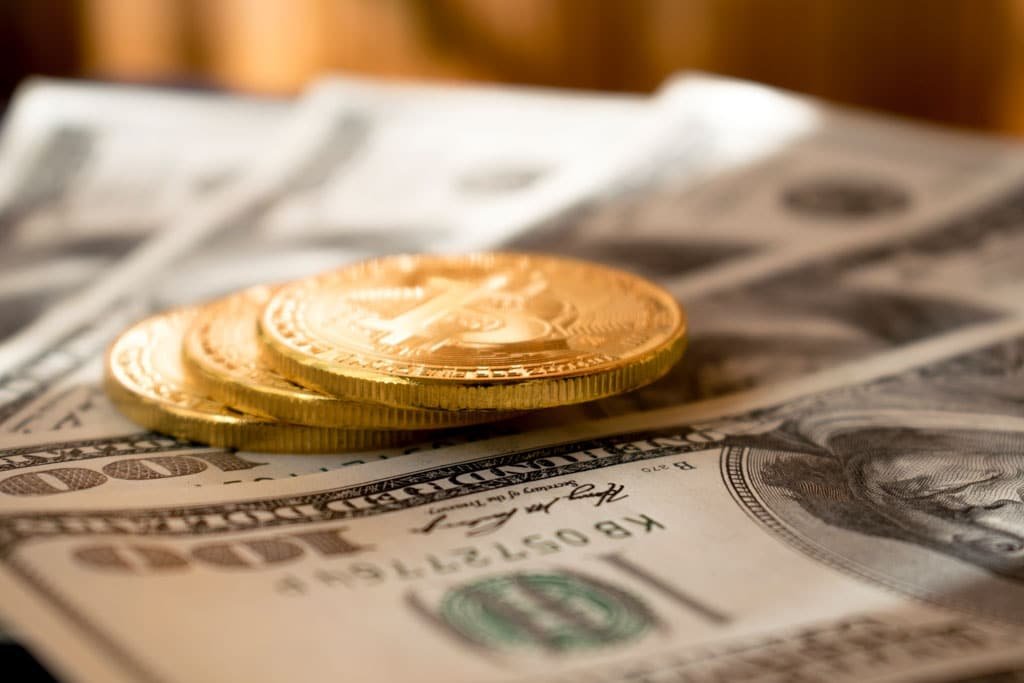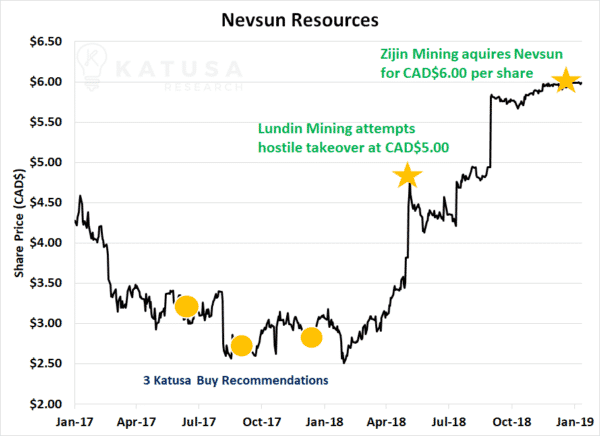
“The investor’s chief problem—and his worst enemy—is likely to be himself. In the end, how your investments behave is much less important than how you behave.”
– Benjamin Graham
I spent the first 10 years of my career learning how to pick stocks.
And even at that, I will continue to make mistakes.
After hundreds of site visits and mistakes and successes on both the technical and financial side, I’ve found a framework that works for me.
Almost as important as my due diligence framework is my framework on how I buy the stock and when and how to sell.
- For one, you should never load up 100% of your desired position into any single buy order.
Perhaps there are other fund managers and newsletter writers who have a mystic ability to buy only once and be set.
But I have found (through direct experience) that the best results have been from buying in tranches.
Buying in Tranches
To keep things simple in my newsletter, I use 4 tranches.
Each tranche is 25% of my desired allocation. With specific price guidance for each tranche.
In this scenario, two things can happen:
- If the stock takes off like a rocket, I have skin in the game.
- If the stock retreats to a level I deem discounted to its intrinsic value, then I add to my position by taking my next tranche.
No one can time a stock perfectly time and time again. So, you have to ease into a position.
- Junior, mid-tier and major stocks alike can make wild moves when a big player buys or sells a chunk of stock in the open market or in periods of market panics.
If that happens like in the market panic of 2020, an alligator investor can pick up shares of a billion-dollar company, that’s run by a world class management team, and pays a fat (and stable) dividend, for cheap.
If the stock drops further, you can elect to pick up a second or third tranche to ease into filling out your entire position.
- For example, if you want to build a $10,000 position in a stock, consider splitting that up into 4 equal tranches of $2,500 each.
Not all tranches may hit. And that’s okay.
Only a novice investor goes all-in. I learned the hard way when I started too.
For me, it makes sense to buy in tranches instead of timing and moving the stock price.
This strategy has served me very well and allowed me to sleep soundly at night knowing I never had to worry about “timing” the market.
In mid-2017, I used this strategy to target research on – and accumulate shares in – a company called Nevsun Resources.
Nevsun was a base metals focused mining company that I was very familiar with. With a depressed copper price, the stock started taking a hit.
When copper started recovering, the stock didn’t follow suit.
I began to buy my first tranche (25% of my desired position).
Then my second tranche…
And then my third tranche.
Fast Forward a Little Over a Year…
And the investment thesis hit on target. Lundin Mining tried to do a hostile takeover, sending the price of Nevsun through the roof to $5.00.
At that point, we locked in a Katusa Free Ride (another alligator investing strategy) so that we could take all risk off the table, and free ride the remaining shares.
A few months later, Chinese outfit Zijin Mining made a bid for Nevsun and acquired the gold company for $6.00 per share.

The strategy of buying in tranches also allowed me and my subscribers of Katusa’s Resource Opportunities to see gains this year in the portfolio of…
- 130% profit in a world-class energy company …
- A 201% profit in a gold producer (we’re now holding for free)
This strategy isn’t sexy. It doesn’t sell thousands of books and seminars.
But it works.
Give Your Speculation Some Time to Play Out
Being patient and investing like an alligator using my system of tranche buying is extremely difficult.
Over my nearly 20-year career, I’ve seen many people (including myself) become impatient and make irrational moves.
As one of the largest financiers in the resource market, I’ve made many mistakes. But I have learned from each mistake.
These are all lessons I share with my subscribers, so that you hopefully don’t have to learn the hard way.
Being impatient has cost me a lot of money.
And here’s an example from personal experience:
I met an analyst on site in early 2006 and we bonded. Site visits do that at times, especially when the plane is stranded in an unexpected 4-day snowstorm that no one was prepared for.
We stayed in touch over the years. He moved on from the firm he was an analyst within 2008 and joined Verde Potash.
I believed in this individual and without doing a site visit I purchased 4 million shares at CAD$0.25. I trusted him, knew of his strong technical background and the company was trading at a discount to cash, so I was getting the management and the project for free.
The company had C$0.29 cents cash per share, so I felt good about my $1 Million bet.
I had many meetings with management and then I planned to do a site visit of my own to the main asset in Brazil.
(2009 was crazy for me as I spent over 300 days on the road and gained 40 pounds as a result of bad habits such as drinking beer with geologists at night on the road, and not working out regularly. But you would be amazed how much market intel you get from drunk geologists at midnight).
Anyways, Verde Potash management laid out a specific time frame and business plan that they assured me would hit if I stuck it through with them.
Well, the first milestone was delayed.
Then the second.
Remember, early 2009 was a very rough market for junior resource stocks.
I didn’t have the time to go out to the project and see for myself.
But a close and trusted friend of mine (thanks Miles!) stated he knew the project and that it wouldn’t work. I was skeptical after that and frustrated with management for missing the milestones.
I lost sight of the main reasons I’d taken the position in the first place. Then the third milestone was missed and I sold. I netted just under a 100% gain.
You would think a near double isn’t bad in a very tough market.
But I screwed that one up.
- As it turned out, I missed an enormously greater score. Within 14 months, the stock was trading north of C$10 a share.
Was the delays management’s fault?
No.
I was impatient.
Even though nothing changed, and I trusted management, I let one friend’s perception of the project change my view.
I continue to learn from my own mistakes (and try to learn from others I respect in the industry).
I continually remind myself that, if the specific reasons for investing in a company are still valid, and I trust management, I shouldn’t let non-management time delays sway me to abandon my position.
Shit happens.
We try to learn and better ourselves and become better investors.
Because of my impatience, I left over $39 million on the table. It was no ones fault but my own.
“Big Returns in Waiting” – The Way of the Alligator
I like to put my money to work as much as anyone else, and sometimes impatience can get the best of you.
That’s why I always recall The Way of the Alligator. If you’re impatient and you’re always “doing something,” you won’t have the cash to buy up bargains during a crash.
When you look at your cash positions as big returns in waiting, you’ll start to realize how powerful the alligator buying system is after one or two big hits.
Regards,
Marin Katusa






